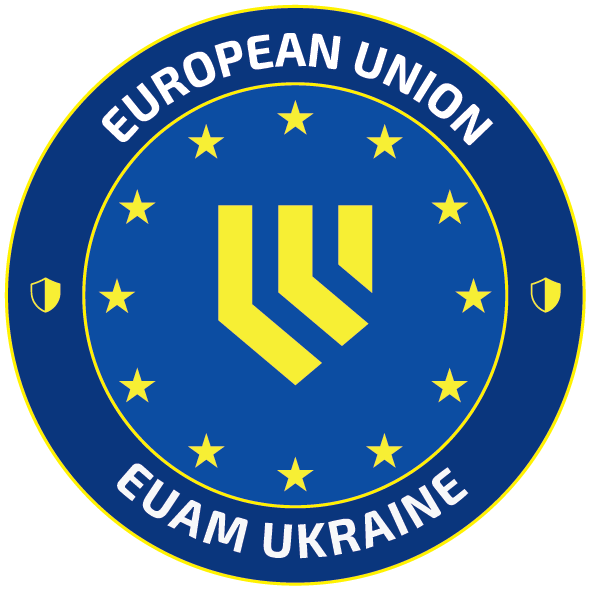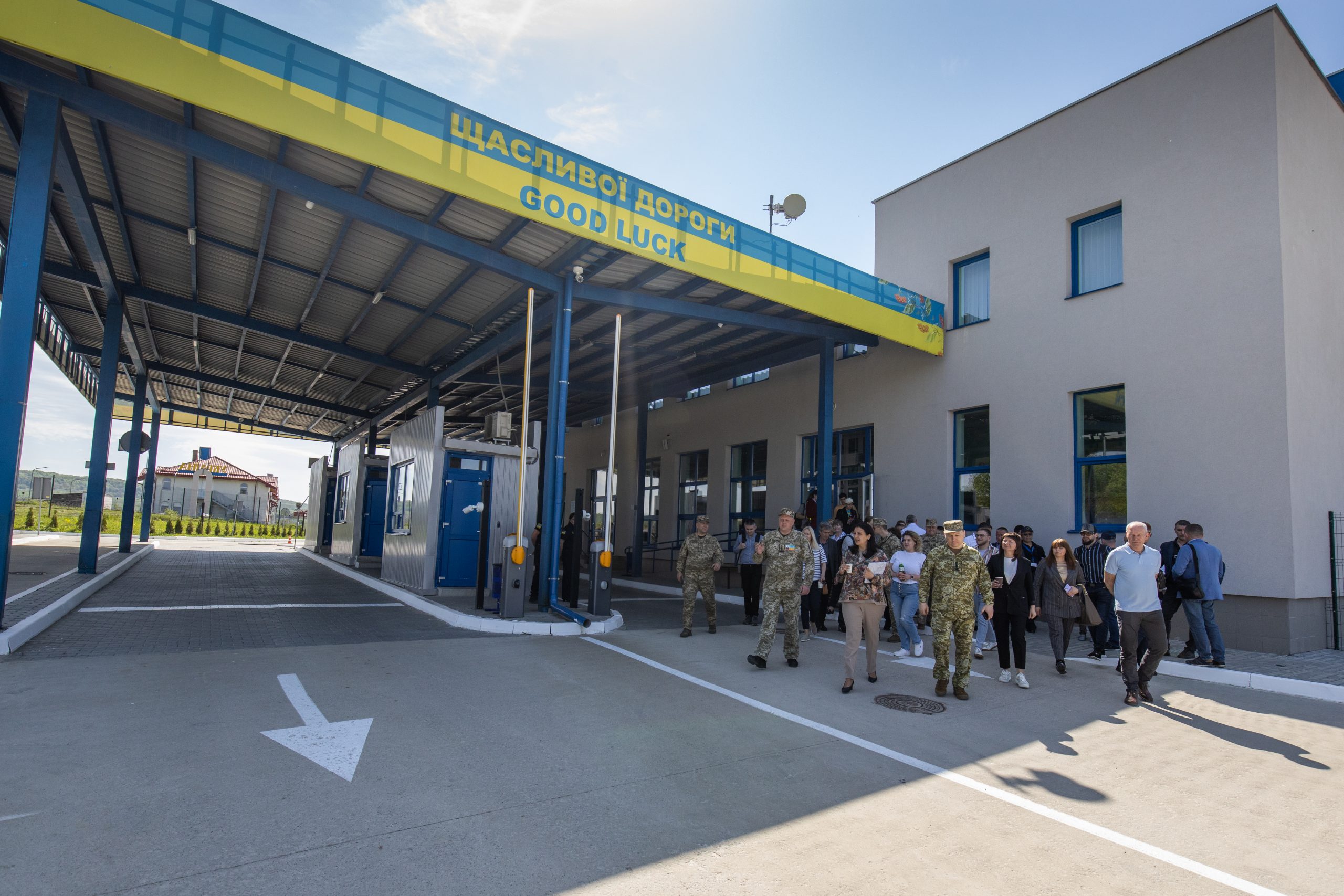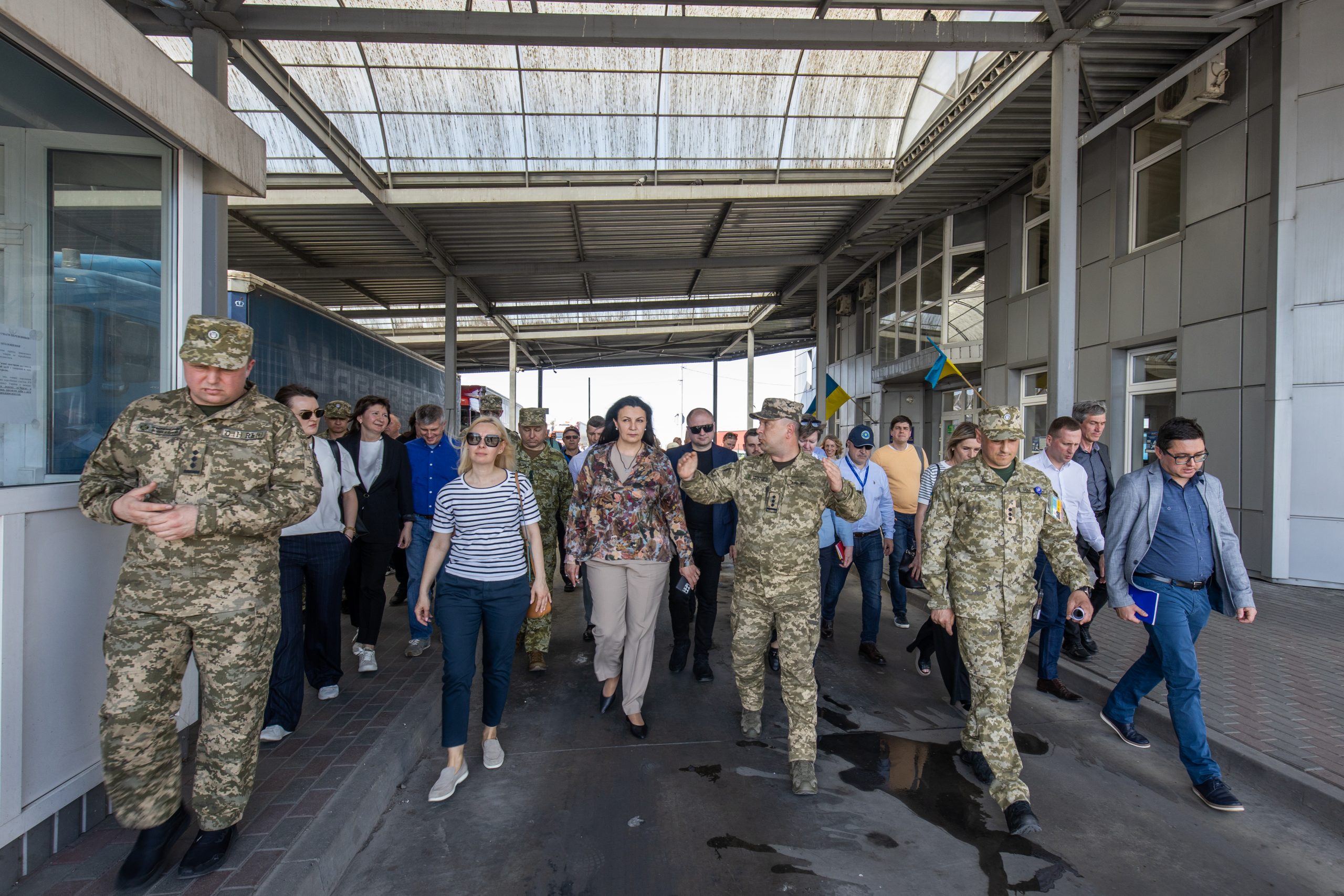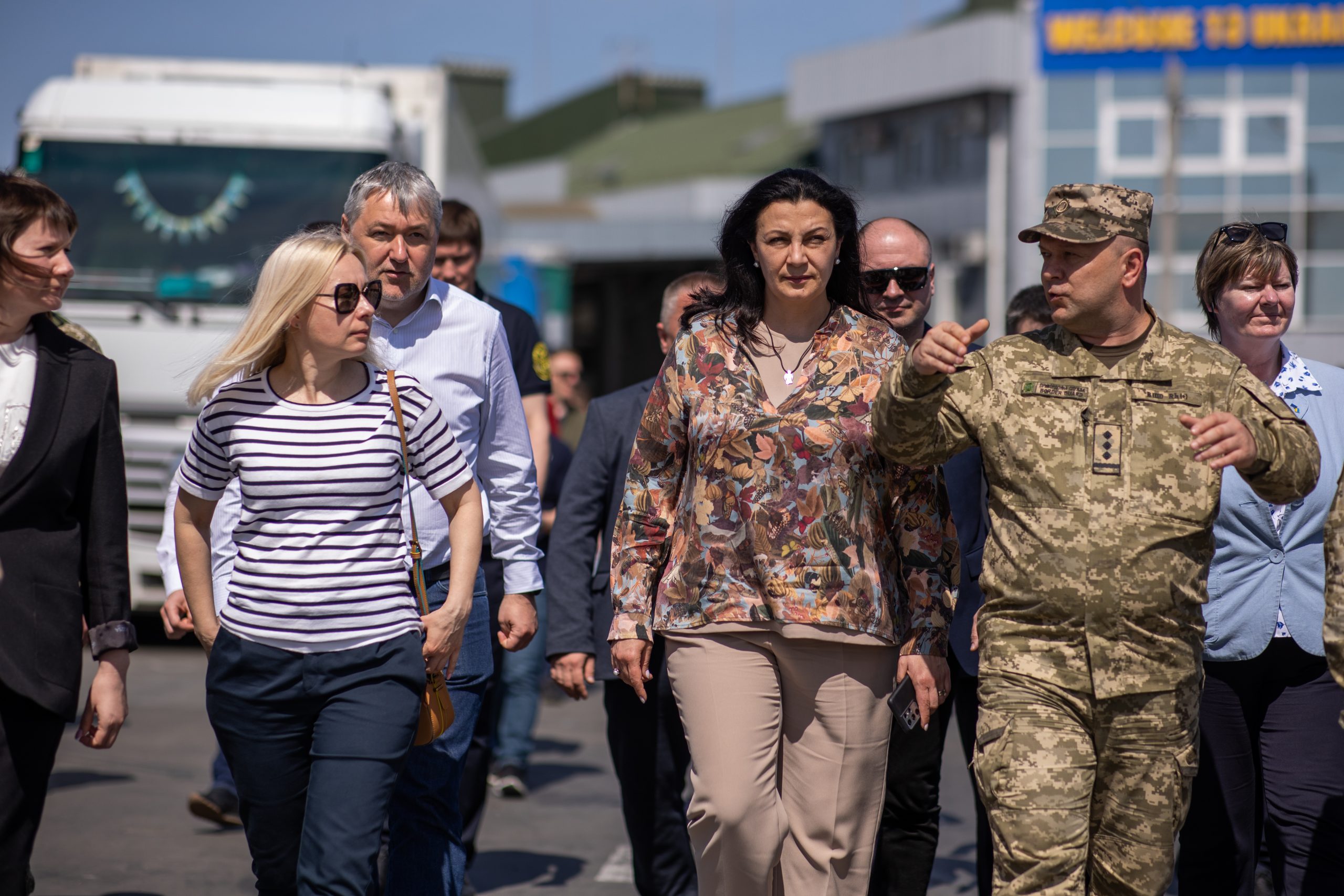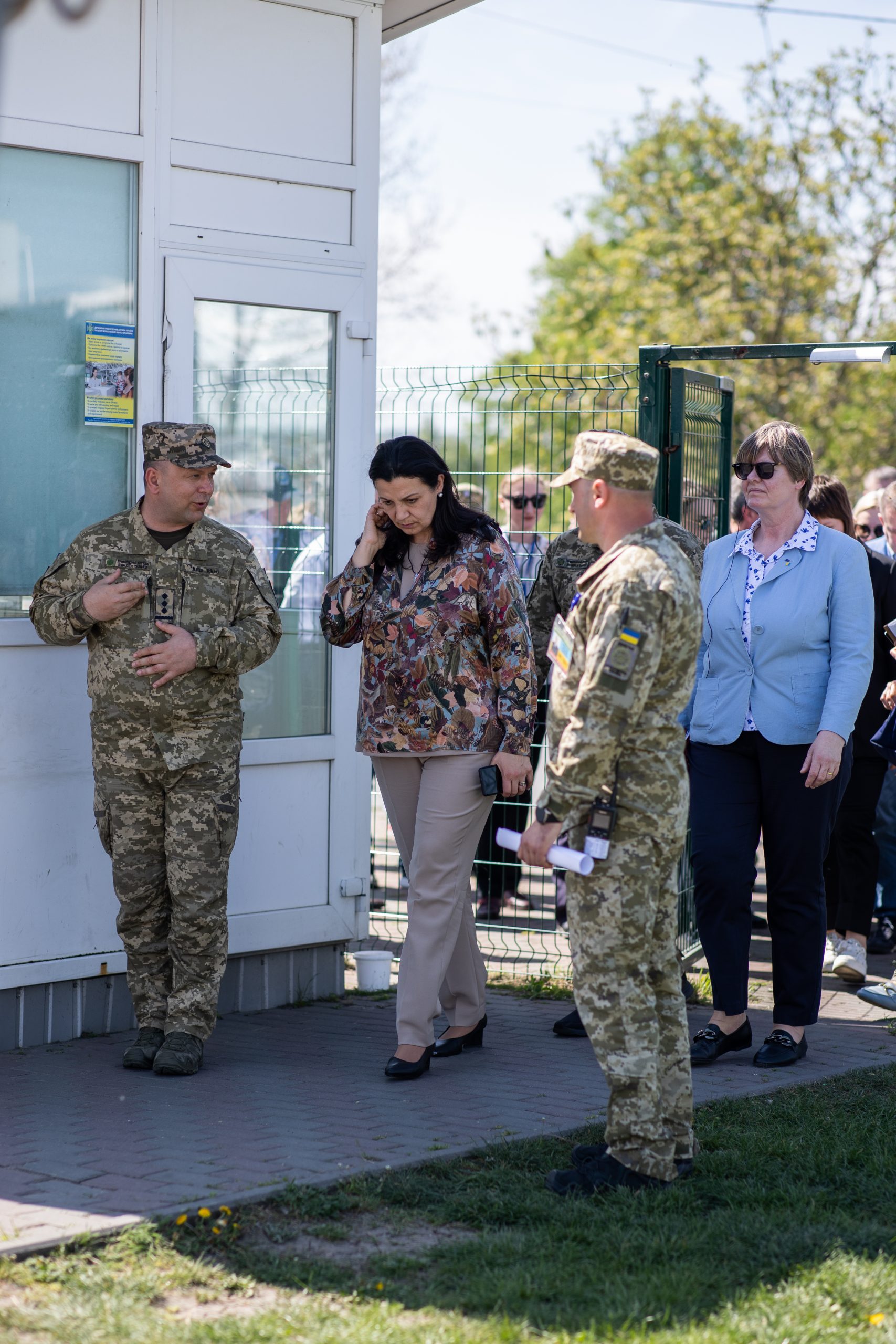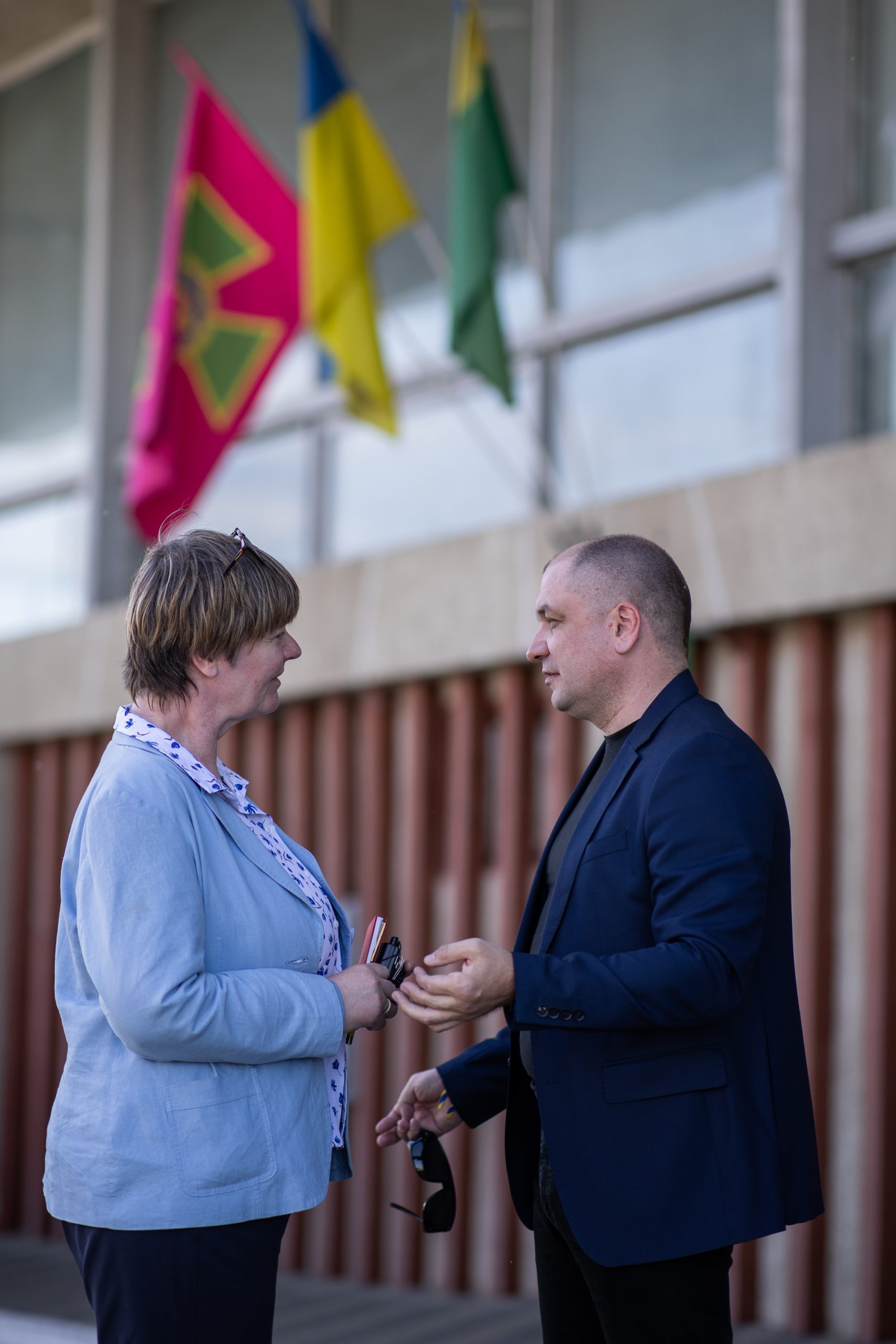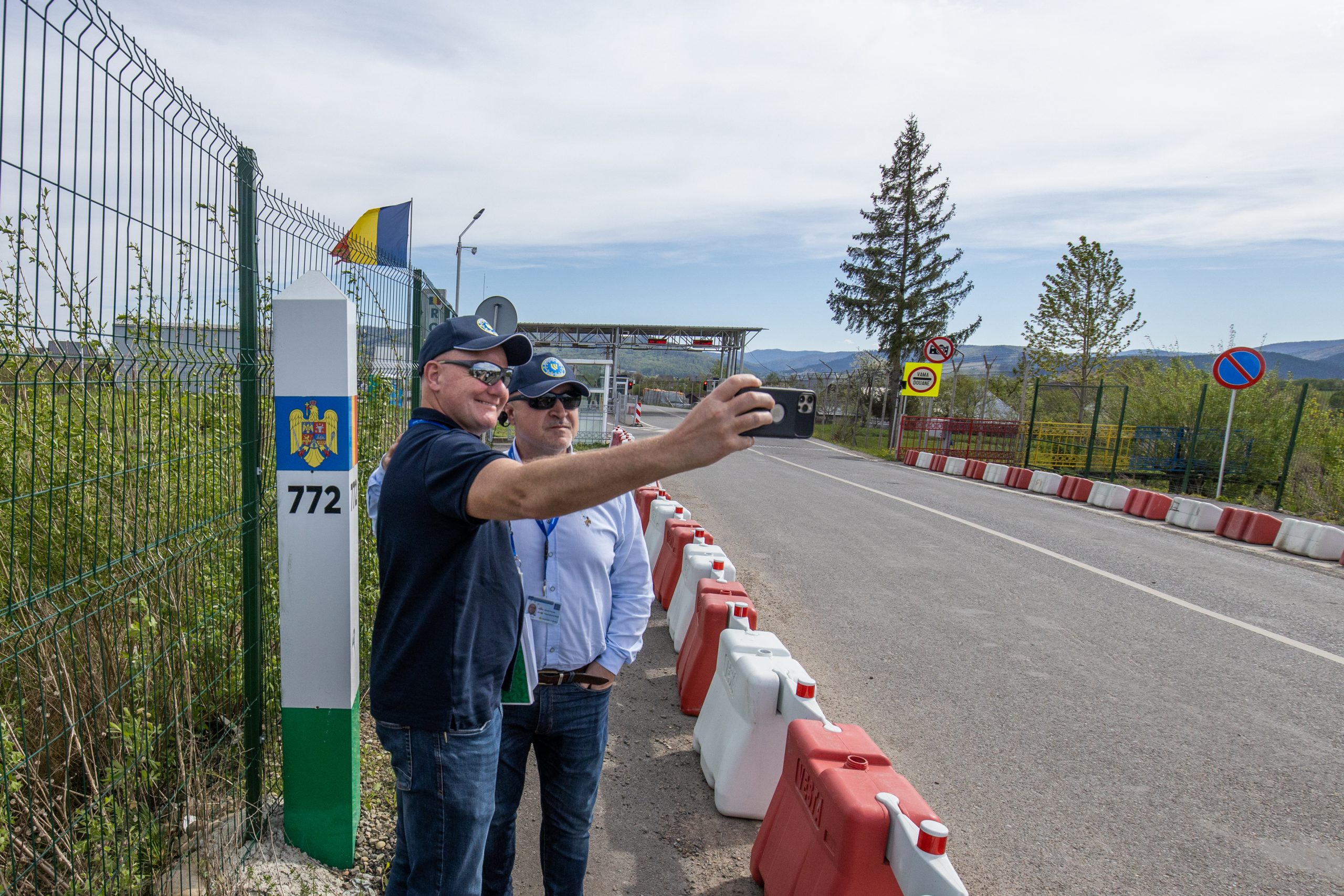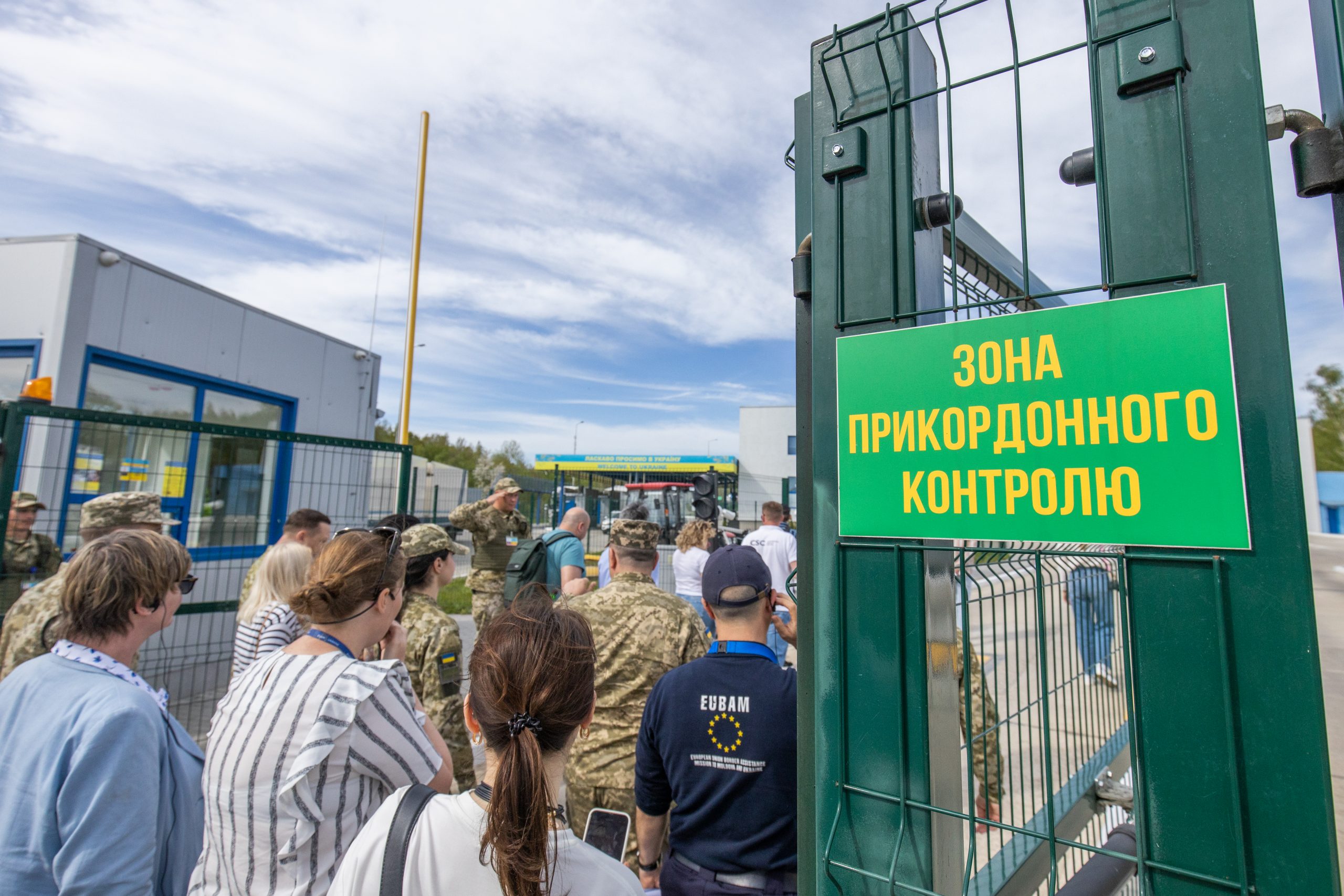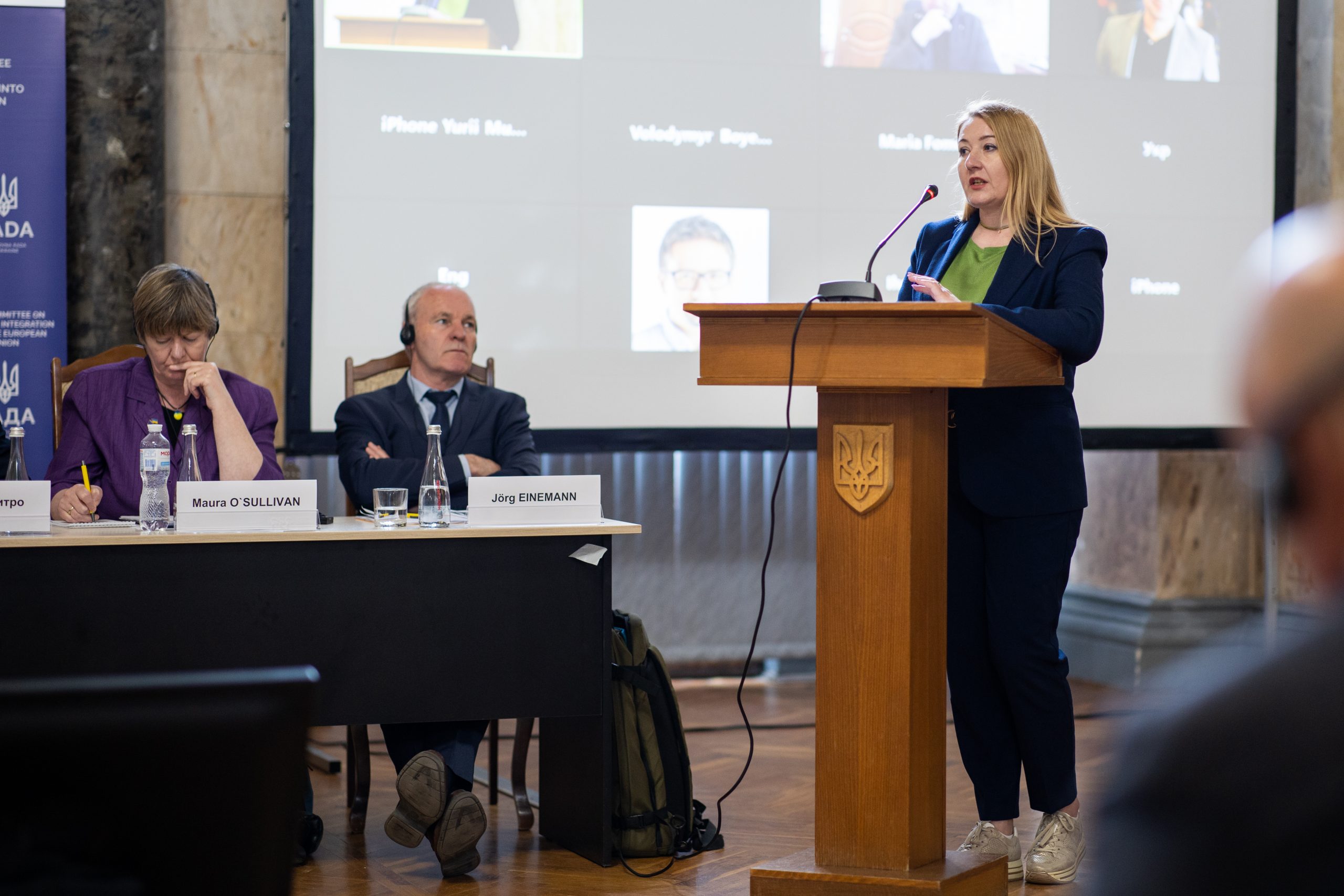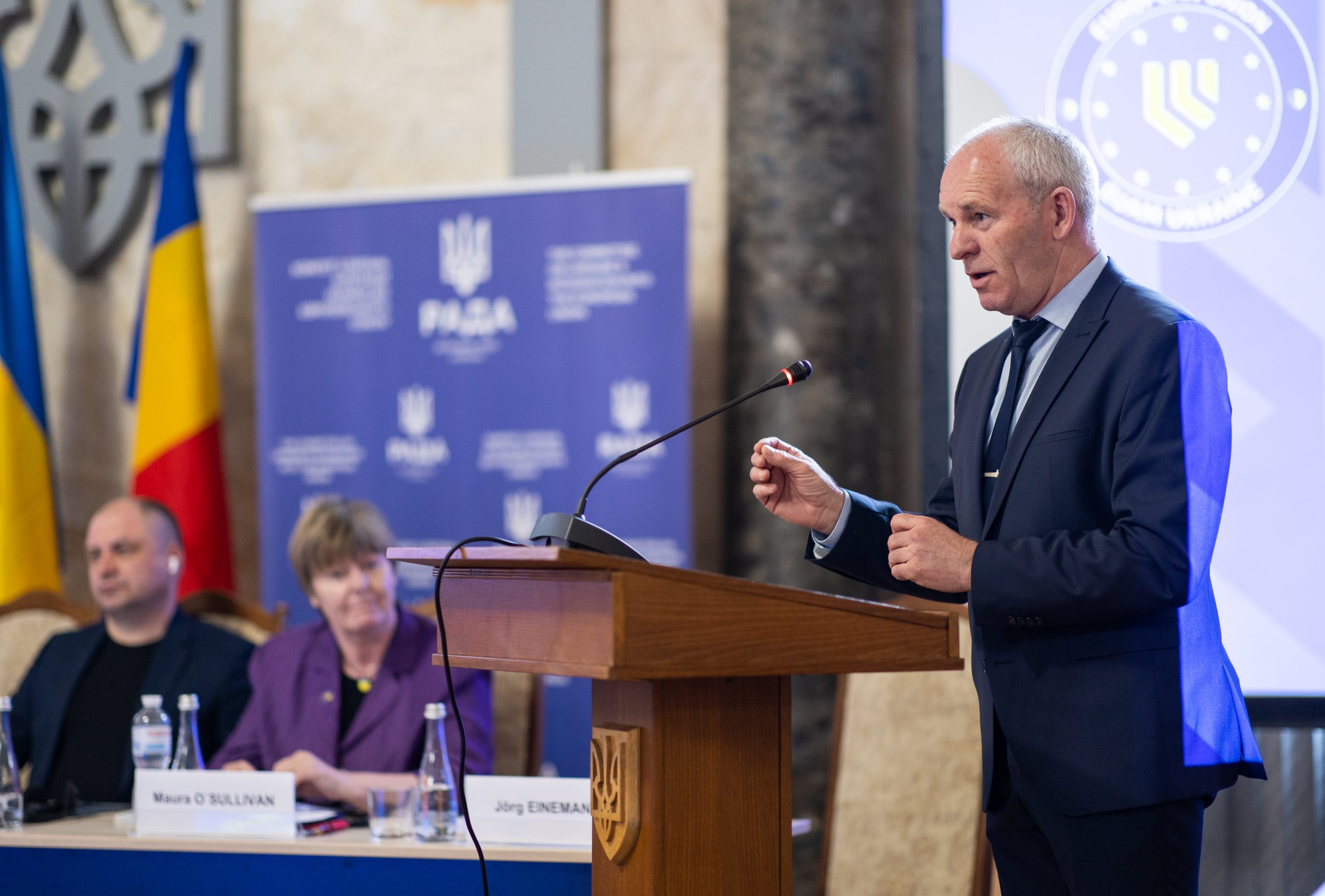Field Visits for Strategic Purposes: EUAM and Ukrainian MPs Assess IBM Implementation on the Border with Romania
April 22, 2024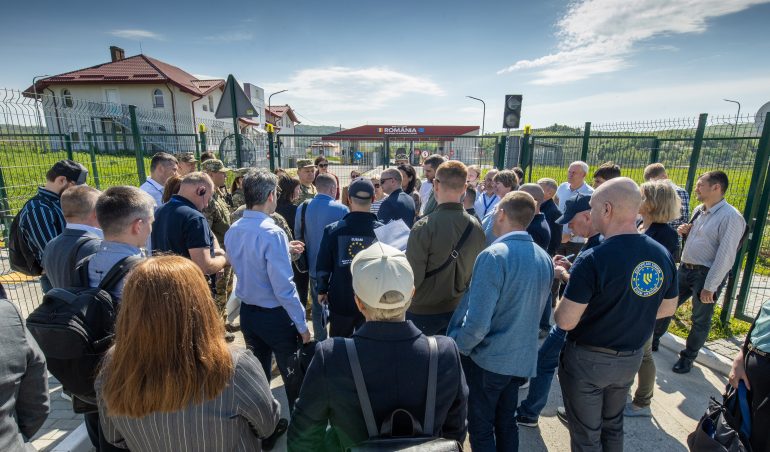
Despite the challenges posed by Russia’s unprovoked war of aggression, Ukraine’s strategic aspirations to join the EU remain unchanged. Meeting EU accession criteria requires significant reforms and alignment of legislation with EU standards, with IBM playing a crucial role.
Ukraine’s borders with EU member states are crucial for communication and trade. Maintaining unimpeded movement of people, goods, and transport is critical, especially in the context of the ongoing war.
The Integrated Border Management (IBM) Strategy is essential when it comes to Ukraine’s ambition of EU integration. Amended in 2021, this Strategy aims to ensure that Ukraine can safeguard the EU’s external borders from within its own borders upon achieving full EU membership. “Considering Ukraine’s European and Euro-Atlantic integration, the key outcome of the Integrated Border Management Strategy is the readiness and capacity to protect the external borders of the EU within the state border of Ukraine,” the document states.
EUAM Ukraine supports the development and implementation of the IBM Strategy alongside Ukrainian partners. The strategy’s real-world effectiveness, particularly under wartime conditions, is continuously assessed. EUAM facilitates joint working visits with the Verkhovna Rada’s Committee and key IBM stakeholders to border crossing points (BCPs), turning strategic plans into actionable outcomes and facilitating parliamentary oversight.
On 15-16 April, the third such visit took the delegation, including EUAM experts, members of the Committee, and local authorities to the Ukrainian-Romanian border, following earlier visits to borders with Hungary, Slovakia, and Poland. The main aim was to gather firsthand insights into the challenges and opportunities for improving border infrastructure, understand the prospects for joint control procedures, and evaluate the implementation of the previous recommendations issued by the Committee.
Expectations VS Reality
Currently, there are five road and one ferry border crossing points between Ukraine and Romania. Of these, only three are used to process trucks loaded with goods. In total, the BCPs can handle approximately 600 trucks per day.
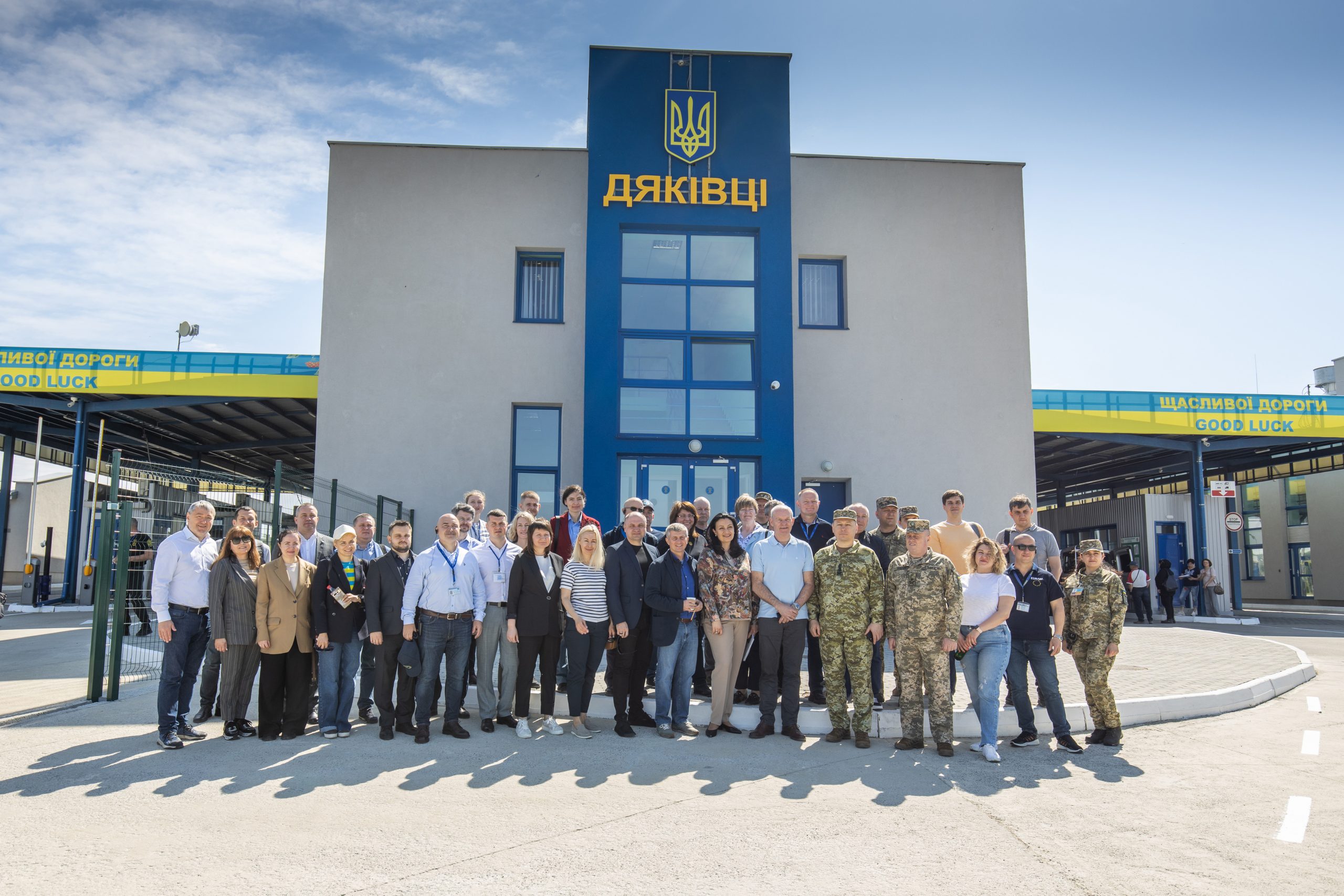
The delegation’s first stop was at the newly opened Dyakivtsi-Rakovets BCP, where facilities are modern and traffic flow is currently minimal. The border guards and customs officers demonstrated their operational equipment, though it was noted that truck scanners are not yet available. Due to infrastructure limitations on the Romanian side, only vehicles up to 3.5 tonnes are permitted.
Approaching Porubne-Siret, the largest BCP on the Ukrainian-Romanian border, the delegation observed a significant improvement. The implementation of the “E-Queue system” has eliminated the long truck queues that were once a major issue here. This system allows drivers to put their vehicles in the electronic queue, and instead of waiting for days in a kilometres-long line before the BCP, they only arrive when it is their turn. But the problem is not completely solved yet.
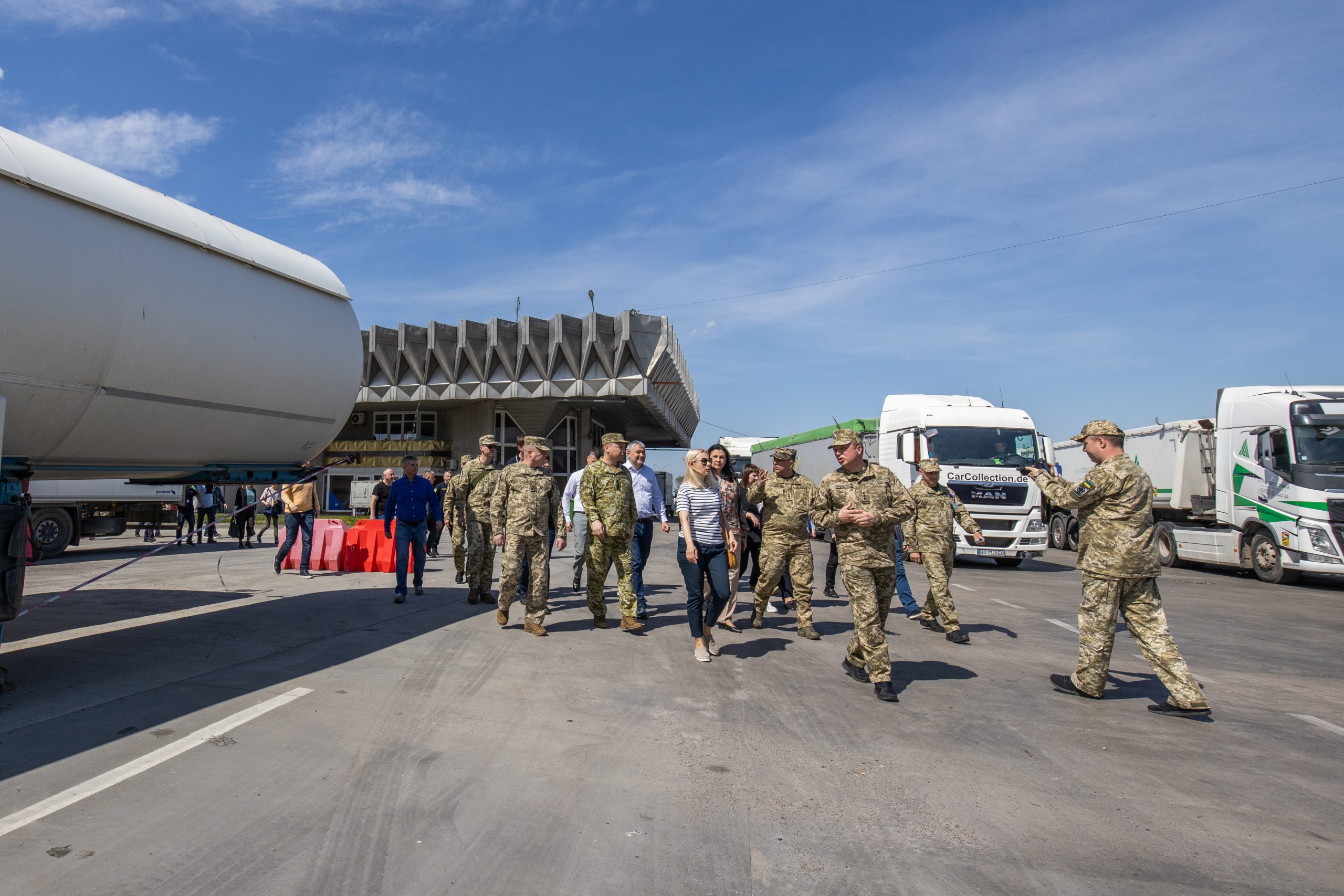
The final destination of the field visit was the Krasnoilsk-Vicovu de Sus BCP, where the challenges of poor road infrastructure were apparent. Despite the scenic views of the Bukovyna region, the reality on the ground was contrasting. A lengthy line of trucks showed that Krasnoilsk does not use the E-Queue system. The BCP only processes cars and empty truck returns.
Open Discussions and Way Forward
Following the field visit, members of the delegation convened in the historic Marble Hall of the Chernivtsi National University of Yury Fedkovych. In this setting, an offsite meeting of the Verkhovna Rada’s EU Integration Committee took place, facilitating open discussions among Ukrainian MPs, government representatives, local authorities, civil society, and international partners.
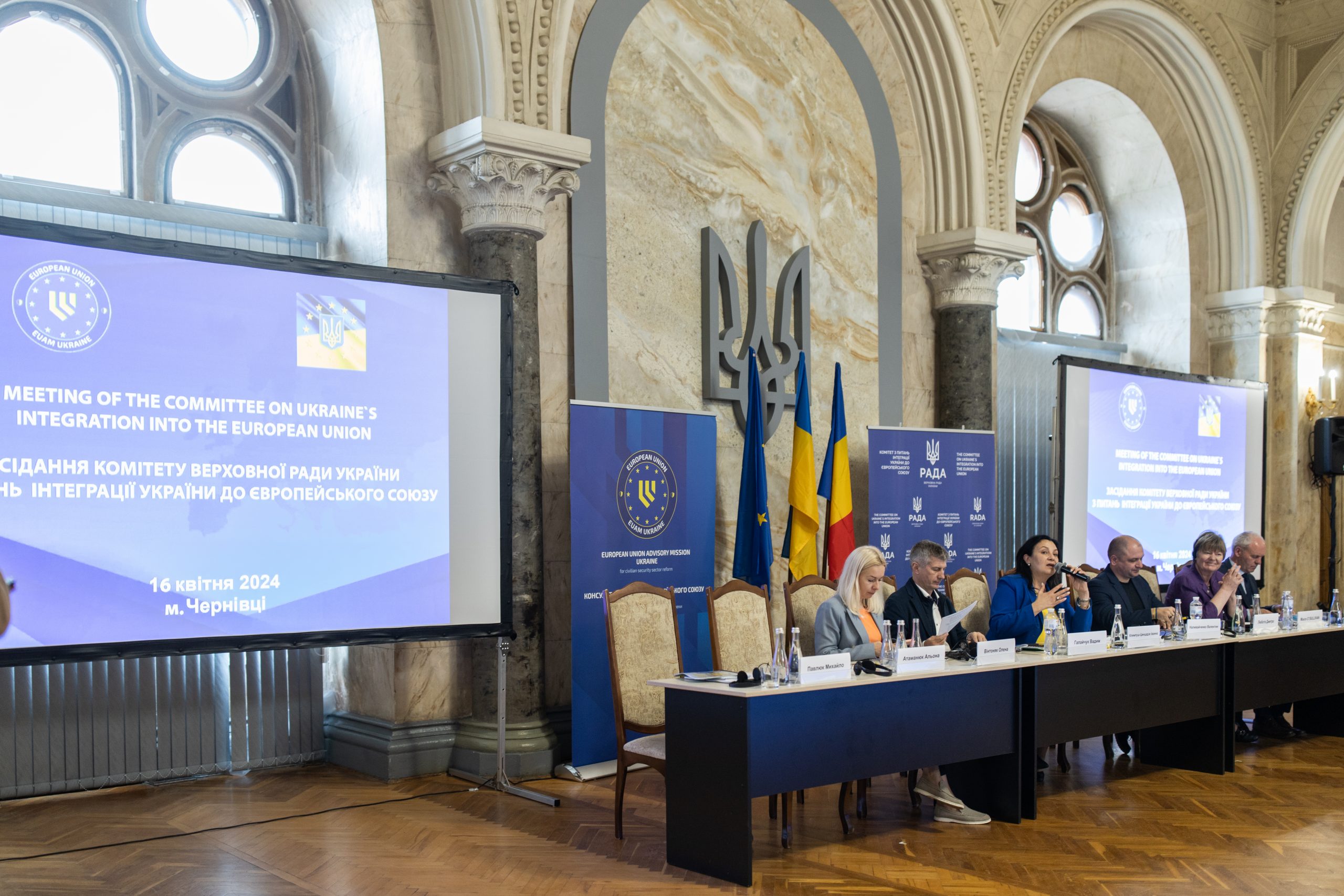
Maura O’Sullivan, Deputy Head of EUAM Ukraine, emphasised the Mission’s impactful contributions: “Our achievements include support to the opening of two new BCPs, the implementation of two pilot projects, and the development of a comprehensive Strategy for a Border Integrated Infrastructure Master Plan along the entire Ukraine-Romania border. This strategy, endorsed by both the Ukrainian and Romanian government, marks a significant milestone in our collaborative efforts.”
Representatives of the key IBM actors in Ukraine — the State Border Guard Service and the State Customs Service — briefed the participants of the meeting on the progress and challenges in implementing the National IBM Strategy. The session provided an excellent opportunity to address specific issues requiring coordinated interagency efforts immediately.
Oleksandr Kava, Ukraine’s Deputy Minister of Foreign Affairs, described the current border trade dynamics: “Due to the situation on the Polish border, goods flow at the border with Romania is overtaking the Polish volumes, which represents about 70% of overall goods, including those through Romanian ports. This shift underscores the need for robust border infrastructure.”
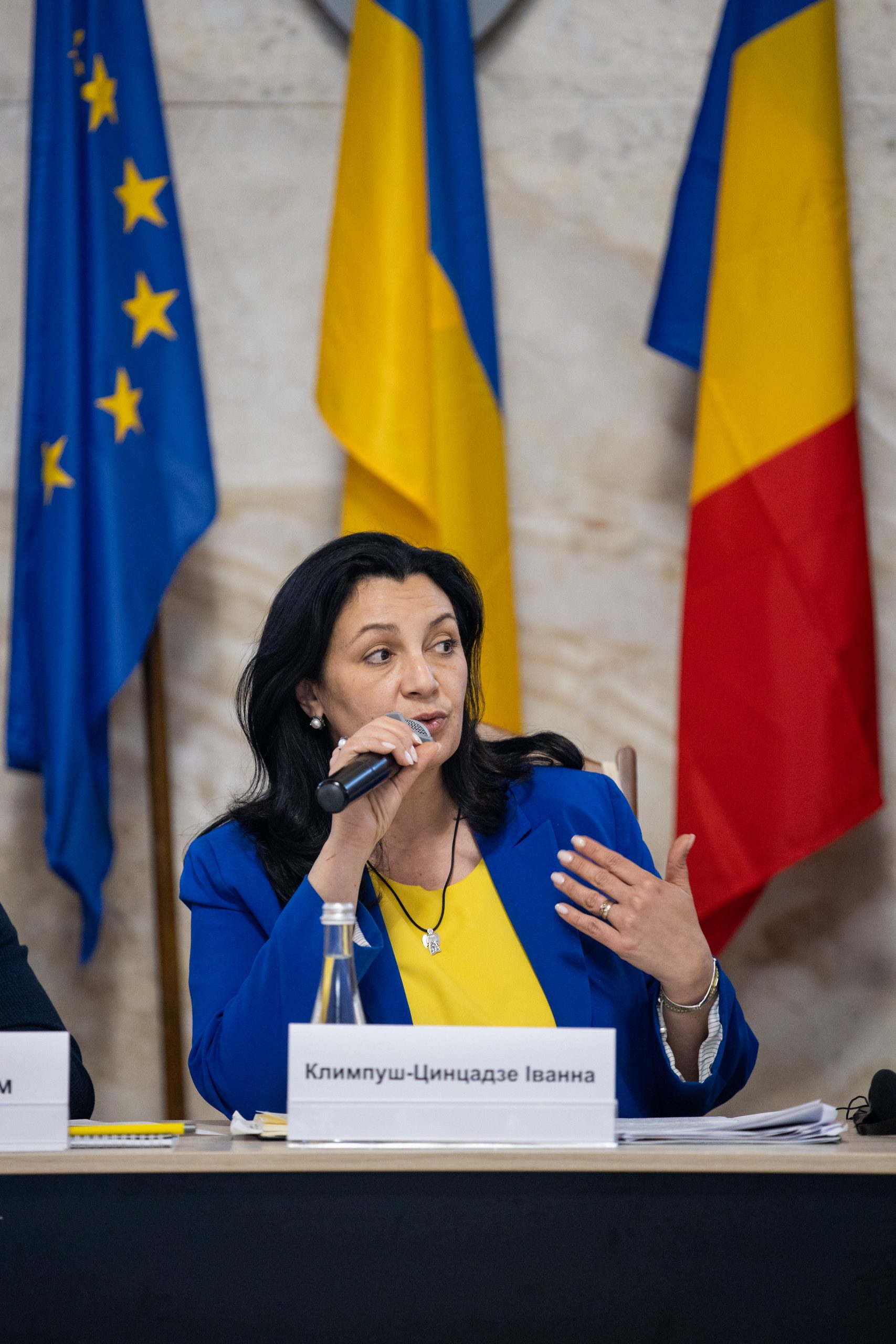
Ivanna Klympush-Tsyntsadze, Chairperson of the Verkhovna Rada Committee on European Integration, stressed the importance of the border. “The border is crucial for us during the war. The section with Romania has become especially important after encountering issues at other EU borders. Although the number of BCPs has increased, the challenges remain significant.”
Following the fruitful discussions and the insights gathered from the field, the Committee of the Verkhovna Rada of Ukraine on Integration into the EU will formulate its recommendations on the Strategy for Integrated Border Management and the development and modernisation of border crossing points on the border with Romania.
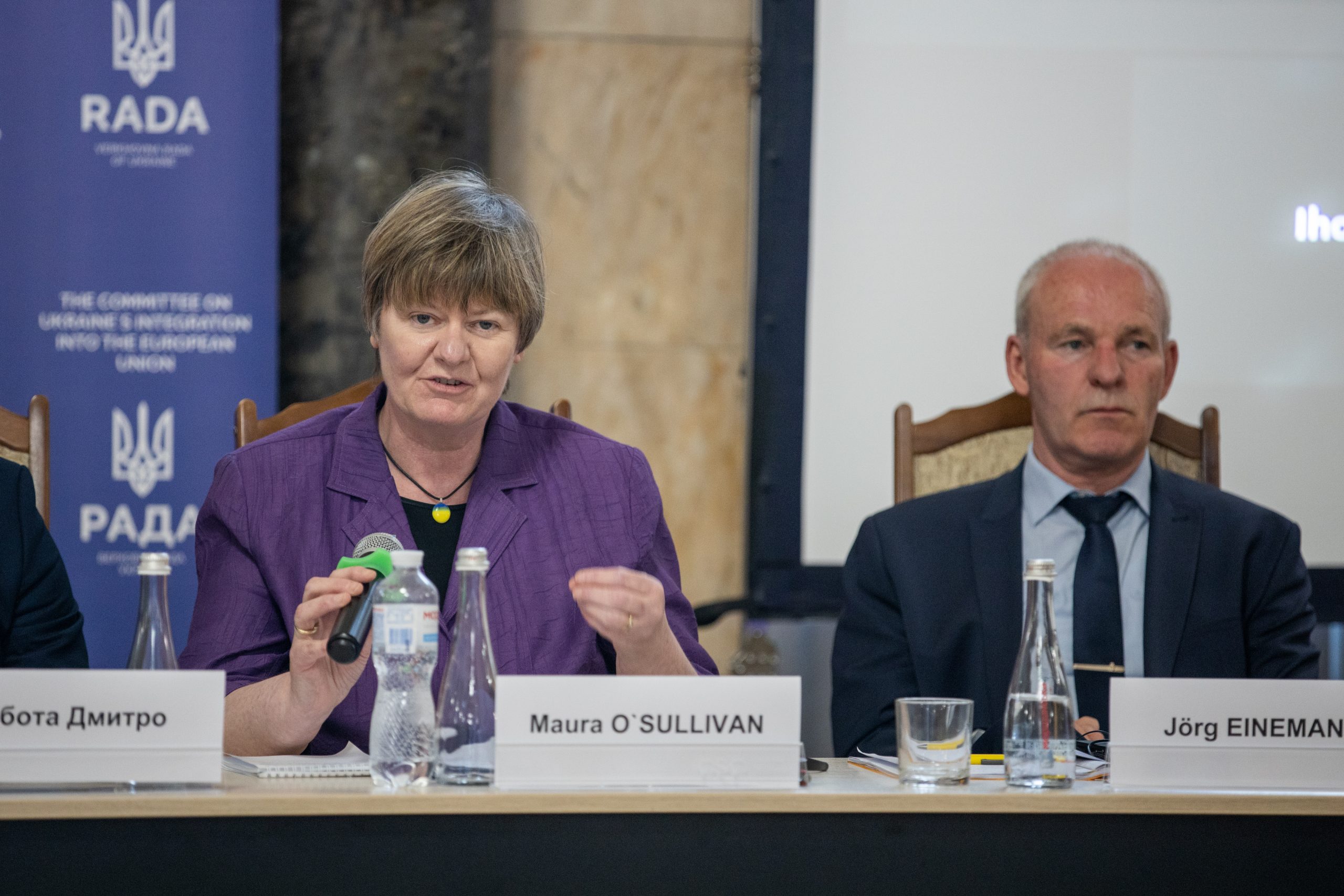
Reiterating the Mission’s unwavering commitment in backing the Ukrainian IBM stakeholders, Maura O’Sullivan emphasised that “It is crucial now, more than ever, to adapt and update our strategies to reflect the evolving objectives and requirements of the European Integrated Border Management, as well as to respond effectively to changes in the political and security environment of Ukraine.”
